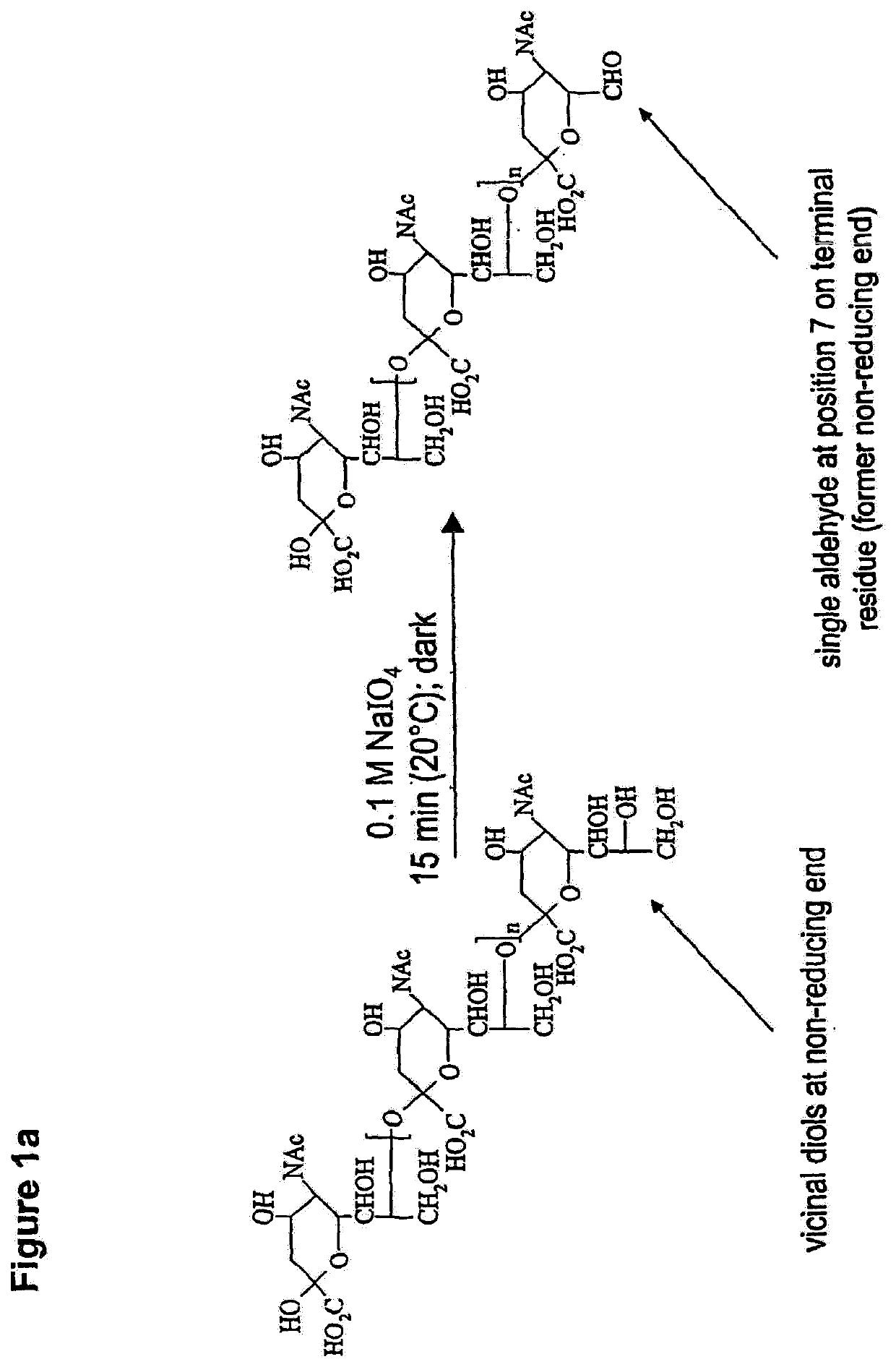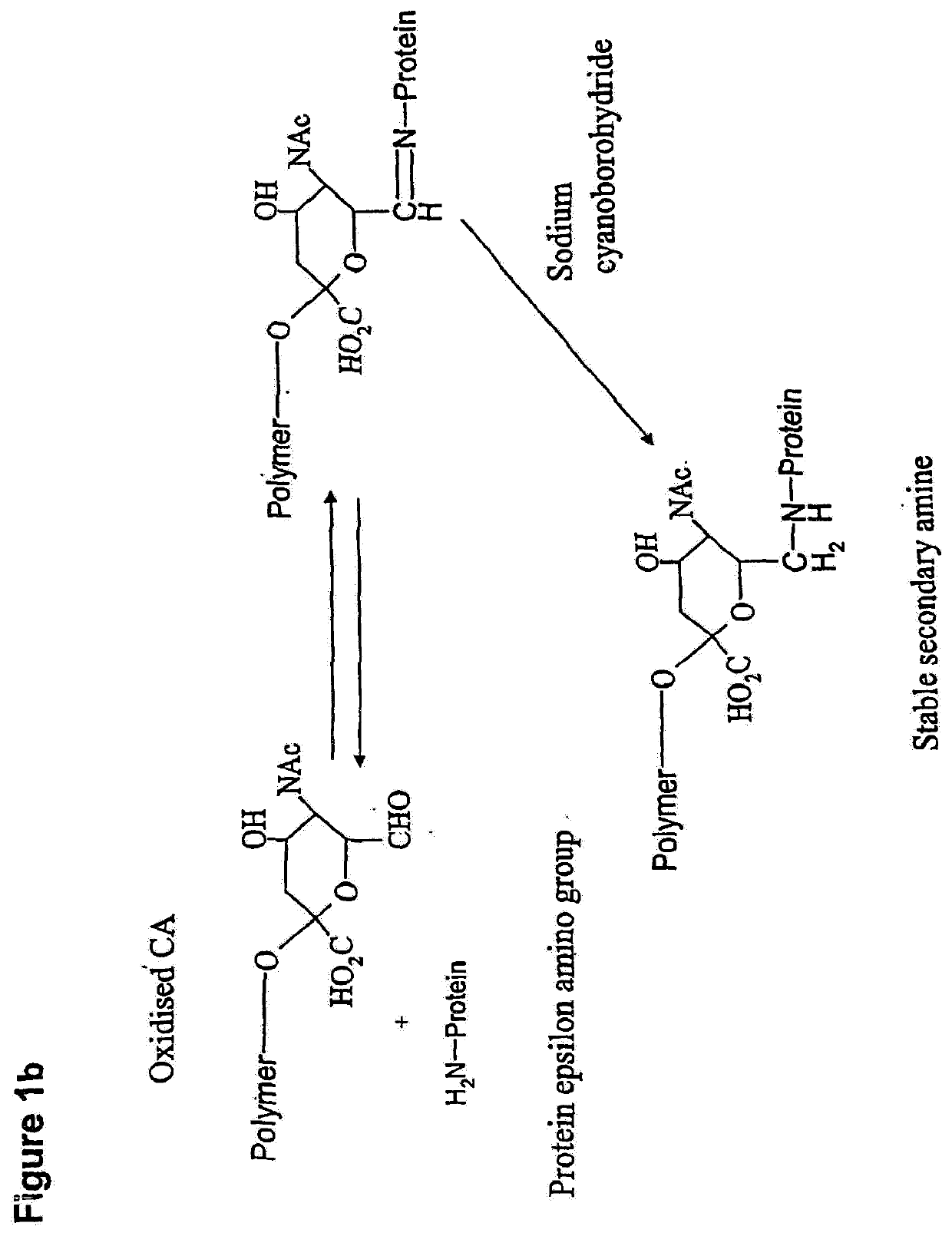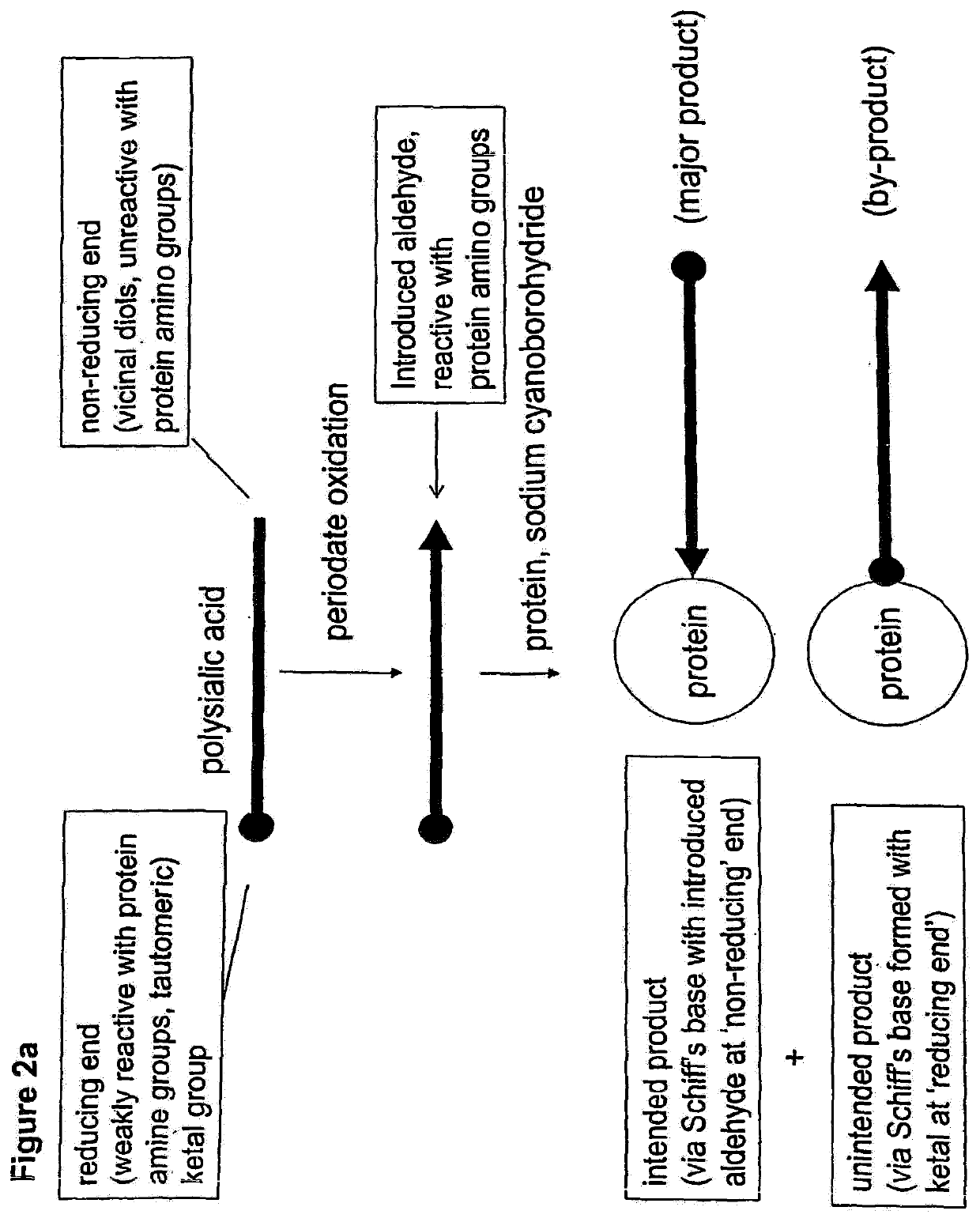Glycopolysialylation of blinatumomab
a technology of blinatumomab and glycopolysialylation, which is applied in the field of polysaccharideblinatumomab conjugates, can solve the problems of pathological conditions triggering and significant toxicities
- Summary
- Abstract
- Description
- Claims
- Application Information
AI Technical Summary
Benefits of technology
Problems solved by technology
Method used
Image
Examples
example 1
Coupling of Aminooxy-PSA to Blinatumomab and Purification of the Conjugate
[0201]To 12.6 mg blinatumomab, dissolved in 6.3 ml 50 mM sodium acetate buffer, pH 6.0, 289 μl of an aqueous sodium periodate solution (10 mM) was added. The mixture was shaken in the dark for 1 h at 4° C. and quenched for 15 min at room temperature by the addition of 6.5 μl 1M glycerol. Low molecular weight contaminates were removed by ultrafiltration / diafiltration (UF / DF) employing Vivaspin (Sartorius, Goettingen, Germany) concentrators (30 kD membrane, regenerated cellulose). Next, 43 mg aminooxy-PSA was added to the UF / DF retentate and the mixture was shaken for 18 hrs at 4° C. The excess PSA reagent was removed by hydrophobic interaction chromatography (HIC). The conductivity of the cooled reaction mixture was raised to 180 mS / cm and loaded onto a 5 ml HiTrap Butyl FF (GE Healthcare, Fairfield, Conn.) HIC column (1.6×2.5 cm), pre-equilibrated with 50 mM HEPES, 3M sodium chloride, 6.7 mM calcium chloride, ...
example 2
Coupling of Aminooxy-PSA to Blinatumomab in the Presence of Aniline as Nucleophilic Catalyst
[0202]To 3.0 mg blinatumomab, dissolved in 1.4 ml 50 mM sodium acetate buffer, pH 6.0, 14.1 μl of an aqueous sodium periodate solution (10 mM) was added. The mixture was shaken in the dark for 1 h at 4° C. and quenched for 15 min at room temperature by the addition of 1.5 μl 1 M glycerol. Low molecular weight contaminates were removed by means of size exclusion chromatography (SEC) employing PD-10 desalting columns (GE Healthcare, Fairfield, Conn.). 1.2 mg oxidized blinatumomab, dissolved in 1.33 ml 50 mM sodium acetate buffer, pH 6.0 was mixed with 70 μl of aniline (200 mM aqueous stock solution) and shaken for 45 min at room temperature. Next, 4.0 mg aminooxy-PSA was added and the mixture was shaken for 2 hrs at room temperature and another 16 hrs at 4° C. Samples were drawn after 1 h, after 2 hrs and at the end of the reaction after 18 hrs. Next, excess PSA reagent and free blinatumomab we...
example 3
Coupling of Aminooxy-PSA to Blinatumomab and Reduction with NaCNBH3
[0203]To 10.5 mg blinatumomab, dissolved in 5.25 ml 50 mM sodium acetate buffer, pH 6.0, 53 μl of an aqueous sodium periodate solution (10 mM) was added. The mixture was shaken in the dark for 1 h at 4° C. and quenched for 15 min at room temperature by the addition of 5.3 μl 1 M glycerol. Low molecular weight contaminates were removed by means of UF / DF employing Vivaspin (Sartorius, Goettingen, Germany) concentrators (30 kD membrane, regenerated cellulose). Next, 35.9 mg aminooxy-PSA was added to the UF / DF retentate and the mixture was shaken for 2 hrs at room temperature. Then 53 μl of aqueous sodium cyanoborohydride solution (5M) was added and the reaction was allowed to proceed for another 16 hrs. Then the excess PSA reagent was removed by means of HIC. The conductivity of the cooled reaction mixture was raised to 180 mS / cm and loaded onto a 5 ml HiTrap Butyl FF HIC (GE Healthcare, Fairfield, Conn.) column (1.6×2...
PUM
| Property | Measurement | Unit |
|---|---|---|
| polydispersity | aaaaa | aaaaa |
| molecular weight | aaaaa | aaaaa |
| molecular weight | aaaaa | aaaaa |
Abstract
Description
Claims
Application Information
 Login to View More
Login to View More - R&D
- Intellectual Property
- Life Sciences
- Materials
- Tech Scout
- Unparalleled Data Quality
- Higher Quality Content
- 60% Fewer Hallucinations
Browse by: Latest US Patents, China's latest patents, Technical Efficacy Thesaurus, Application Domain, Technology Topic, Popular Technical Reports.
© 2025 PatSnap. All rights reserved.Legal|Privacy policy|Modern Slavery Act Transparency Statement|Sitemap|About US| Contact US: help@patsnap.com



